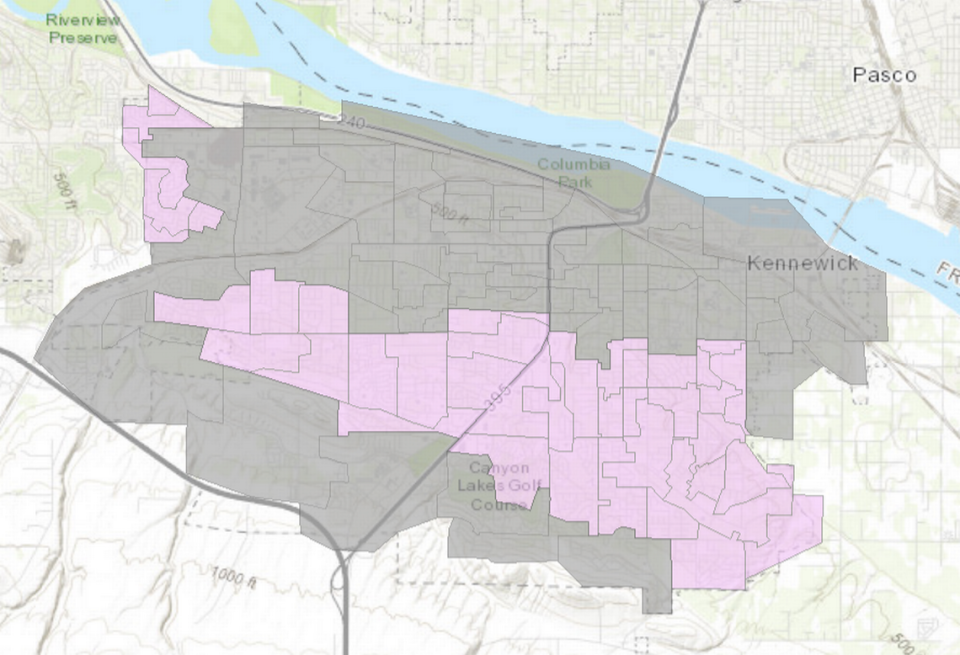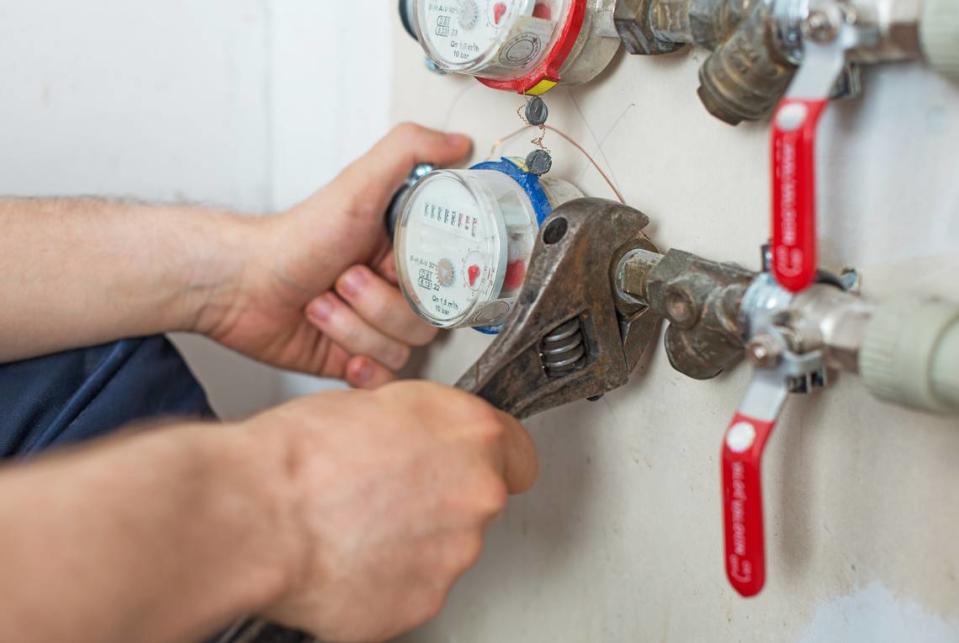11,000+ more Kennewick homes, businesses getting new water meters. What’s different?
Sometimes water leaks aren’t found until it’s too late, leaving homeowners stuck with a massive bill for repairs and a swimming pool worth of leaked water.
That could soon be a thing of the past for many Tri-Cities residents, as Kennewick kicks off the second phase of its $12.5 million water meter overhaul.
They’ve already replaced aging meters at more than 14,000 homes and businesses as part of a project that began in late 2022. This spring they’re starting work on the last 11,400.
They’ve also been installing the new meters in recent years on new buildings, so some customers might not need an upgrade, the city’s Public Relations Manager Evelyn Lusignan told the Herald in an email.
“The upgrade project modernizes our water metering system, which will help our community to better manage our water resources more efficiently,” she said. “We have been exchanging older water meters with new meters or just replacing the registers on newer meters.”
Customers can use an interactive map to find an estimate for when crews are going to be in your area. You’ll also receive a notice with exact dates from the city ahead of crews beginning in your neighborhood.

The replacement shouldn’t require any major construction, they’ll just be swapping out a small run of pipe with the meter built into it or swapping out the meter itself when possible. Customers can expect water to be off for just a short time.
The upgrade should take about 15 minutes when crews begin work.
You might notice foamy, discolored or odd tasting water immediately after the replacement. That is normal, the city said. They recommend flushing lines for 15 minutes with cold water. You should avoid flushing with hot water or a line with an aerator on it in order to prevent sediment from getting into your hot water heater or aerator.
Lusignan said that if a customer is still having issues with odd smelling or tasting water after thoroughly flushing the pipes, they should contact Public Works employees online or at 509-585-4419. The schedule card will have more information.

What’s the benefit?
The new meters will offer an array of features for the city and customers.
Once the upgrades are complete the city will launch a new feature for water accounts that will let customers check their water use as it updates throughout the day.
Lusignan said the old meters were read just once every two months.
“So if a customer was experiencing a leak or other (issues), they wouldn’t know about the high usage for two months or more,” she said in the email.
After the new online system launches, a customer who suspects a leak will be able to check to see how much water they’re using when no faucets or appliances are running. If a home or business sees a spike in water use, utilities workers will get a notice, allowing them to identify problems sooner.
Irrigation customers also will be able to more accurately monitor water use during irrigation season. The updates also will help those customers more quickly identify if a line has been broken, and eventually compare water use from season to season.
The changes could potentially save customers a lot of money by being able to spot an emergency and trouble shoot the problem.
“This will save customers a lot if they need to make an adjustment in their usage or fix a plumbing issue if they are actively monitoring their usage and signing up for the alert notifications,” she said. “Some of our commercial customers also routinely audit their usage as part of their conservation and cost control efforts. Their ability to have hourly information can help them monitor facility usage, irrigation schedules, and more.”
The city is asking customers to check the area around their meter once they receive their installation schedule to make sure the meter is accessible and free of vegetation or any other potential blockage.
The first phase of the project cost about $7.8 million. It was paid for with $6 million from a low-interest Public Works Trust Fund loan and $1.8 million from water and sewer rate revenues.
The second phase comes in at just over $4.7 million and was funded entirely with water and sewer rate revenue.

